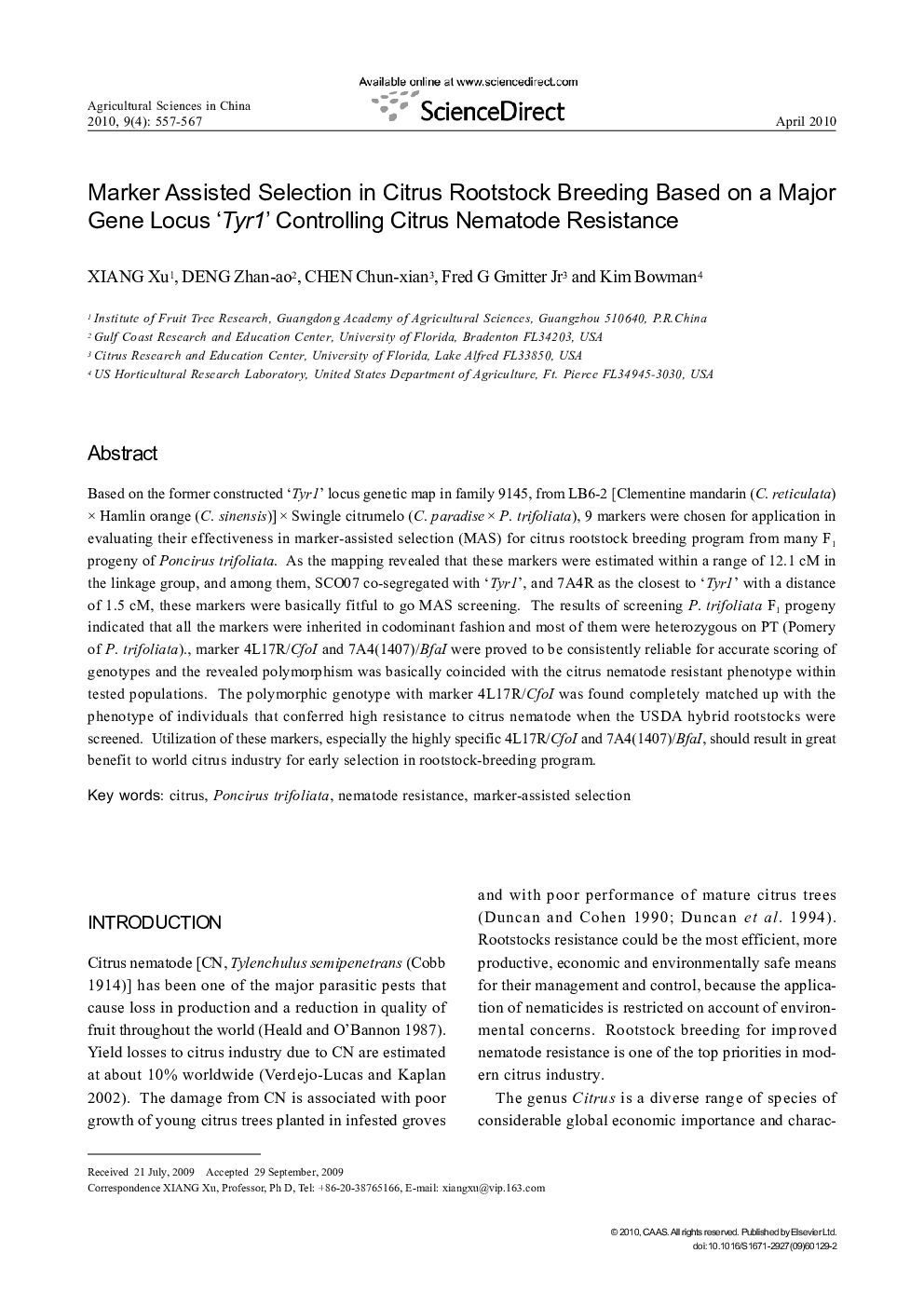| Article ID | Journal | Published Year | Pages | File Type |
|---|---|---|---|---|
| 4490155 | Agricultural Sciences in China | 2010 | 11 Pages |
Based on the former constructed ‘Tyr1’ locus genetic map in family 9145, from LB6-2 [Clementine mandarin (C. reticulata) × Hamlin orange (C. sinensis)] × Swingle citrumelo (C. paradise × P. trifoliata), 9 markers were chosen for application in evaluating their effectiveness in marker-assisted selection (MAS) for citrus rootstock breeding program from many F1 progeny of Poncirus trifoliata. As the mapping revealed that these markers were estimated within a range of 12.1 cM in the linkage group, and among them, SCO07 co-segregated with ‘Tyr1’, and 7A4R as the closest to ‘Tyr1’ with a distance of 1.5 cM, these markers were basically fitful to go MAS screening. The results of screening P. trifoliata F1 progeny indicated that all the markers were inherited in codominant fashion and most of them were heterozygous on PT (Pomery of P. trifoliata)., marker 4L17R/CfoI and 7A4(1407)/BfaI were proved to be consistently reliable for accurate scoring of genotypes and the revealed polymorphism was basically coincided with the citrus nematode resistant phenotype within tested populations. The polymorphic genotype with marker 4L17R/CfoI was found completely matched up with the phenotype of individuals that conferred high resistance to citrus nematode when the USDA hybrid rootstocks were screened. Utilization of these markers, especially the highly specific 4L17R/CfoI and 7A4(1407)/BfaI, should result in great benefit to world citrus industry for early selection in rootstock-breeding program.
